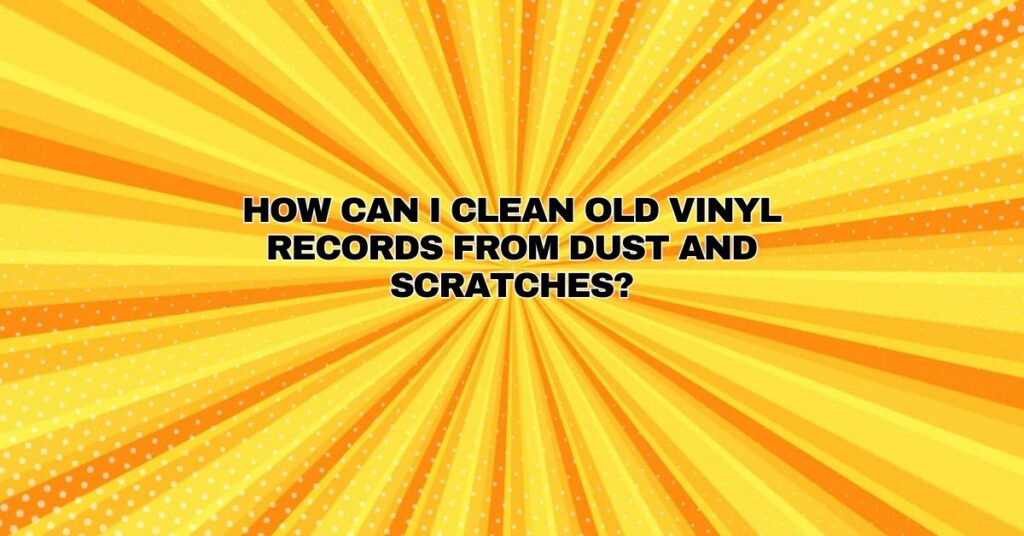Vinyl records have held a special place in the hearts of music enthusiasts for decades. They offer a warm, authentic sound that has made a resurgence in recent years. However, many collectors find themselves with old vinyl records that have accumulated dust and developed scratches over time. In this comprehensive guide, we will explore the best practices for cleaning and repairing old vinyl records, allowing you to bring the nostalgic charm of your vintage vinyl back to life.
Cleaning Old Vinyl Records
Cleaning old records is the first and most crucial step in restoring their audio quality. Dust and dirt on the record’s surface can create noise, reduce sound quality, and potentially damage the stylus. Here’s how to clean old vinyl records effectively:
- Gather Supplies: Before you start cleaning, assemble the necessary tools: a carbon fiber brush, anti-static brush, microfiber cloth, record cleaning solution, and distilled water.
- Dry Cleaning: Begin by gently removing loose dust and debris from the record’s surface using a carbon fiber brush or an anti-static brush. Ensure that the brush is clean to prevent scratching the record.
- Wet Cleaning: For a more thorough clean, use a record cleaning solution. Apply a small amount of the solution to a microfiber cloth or a dedicated record cleaning brush. Gently wipe the record in a circular motion. Clean the entire surface.
- Rinse and Dry: After cleaning, rinse the record thoroughly with distilled water to remove any remaining cleaning solution. Dry it by gently wiping it with a clean, dry microfiber cloth.
- Record Cleaning Machines: For collectors with a large collection, consider investing in a record cleaning machine. These devices automate the cleaning process, providing a deep and effective cleaning without risking damage.
Repairing Scratched Vinyl Records
While cleaning can greatly improve sound quality, it may not fully address scratches, especially deep ones. Repairing scratched records requires more effort and attention. Here are some methods to try:
- Vinyl Record Cleaner: Some cleaning solutions are designed to repair light scratches. Apply the solution and gently rub it into the scratched area with a soft cloth. Follow the manufacturer’s instructions.
- Wood Glue Method: This DIY method can repair shallow scratches. Apply a thin layer of wood glue (e.g., PVA glue) to the scratched area. Let it dry completely (usually 24-48 hours), and then carefully peel it off. The glue should lift any dirt and debris along with it.
- Microfiber Cloth and Toothpaste: Some collectors have reported success using toothpaste and a microfiber cloth to fill in and minimize shallow scratches. Apply a small amount of toothpaste, gently rub it into the scratch in a circular motion, and then wipe it clean with a damp cloth. Be cautious when trying this method.
- Professional Record Restoration: For valuable or deeply scratched records, consider professional restoration services. They use advanced techniques to repair and restore your vinyl records. This option is ideal for rare or highly prized records.
Prevention and Maintenance
To keep your newly cleaned and repaired records in top condition, follow these tips:
- Store Records Properly: Use polythene inner sleeves and plastic outer sleeves to protect your records from dust, moisture, and damage. Keep your records in their original jackets whenever possible.
- Storage Environment: Store your records vertically in a cool, dry place, away from direct sunlight and extreme temperature fluctuations.
- Avoid Overcrowding: Allow enough space between records to prevent warping and pressure on the edges.
- Regular Inspection: Periodically inspect your records for any new damage or issues, addressing them promptly.
Conclusion
Cleaning and repairing old vinyl records requires a delicate touch, patience, and careful attention to detail. Properly maintained records can provide a rich, high-quality audio experience, even after years of use. With the right techniques and maintenance, you can revive your vintage vinyl collection, ensuring that you continue to enjoy the timeless charm of analog sound for years to come.


